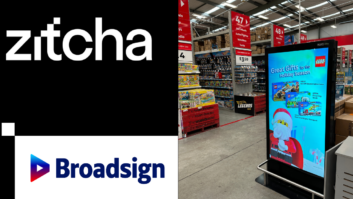 Two tech titans recently made big moves to change the way consumers shop. Google added interactive 3D product models into organic search results and Amazon dropped 2D videos in favour of interactive 3D elements on their product pages.
Two tech titans recently made big moves to change the way consumers shop. Google added interactive 3D product models into organic search results and Amazon dropped 2D videos in favour of interactive 3D elements on their product pages.
These changes build on an ever-growing body of evidence that 3D visualisation technology is the future of ecommerce: According to [Canadian multinational e-commerce company] Shopify, online shopping experiences with a 3D product model have a 94% higher conversion rate. With 3D visualisation becoming more common and less expensive, this is a great time for AV integrators to upgrade their own online experiences.
3D INVESTMENT
AV integrators aren’t running traditional B2C ecommerce sites, but the statistics on the integration of virtual environments and 3D modelling in B2C demonstrate how they can become a powerful part of a customer journey.
For example, Shopify’s data on the role of 3D in ecommerce conversions indicates this technology is persuasive and can help accelerate decision-making. The same report found that 3D product models are correlated with a 35% reduction in returns; this tells us that 3D increases the accuracy of the client’s expectations, resulting in higher satisfaction upon final delivery.
3D visualisation technology can also be instrumental in increasing the total value of a sale. Audi found that customers using a 3D configurator drove a 9% increase in the purchase of custom features. The process of visualising an upgraded system in a lifelike, virtual space helps make add-ons concrete and irresistible.
The AV industry can leverage 3D and virtual technologies for faster sales cycles, higher customer satisfaction, and more successful upsells. Perhaps most important for an industry rife with complex technologies, however, 3D experiences can be powerful educational tools, detailing features while educating the customer about the product as they view it from a variety of different angles. This technology goes beyond just basic persuasion to setting real expectations and reducing product learning curves.
EFFECTIVE DEPLOYMENT
Implementing virtual environments or 3D modelling is a specialised skill: if you’re ready to incorporate this technology into your website or other waypoints on your customer journey, you’ll likely need a partner.
Start by developing a clear plan for your use cases and needs. For example, do you want to build interactive models of specific products, or a 3D virtual environment demonstrating a complete application? This is an important distinction. Models focus on detailed interaction with specific objects, while virtual environments provide a broader, more immersive experience in a room simulation.
Think about who your audience is and what they care about. Do you need to help them understand the differences between various product options – and perhaps persuade customers of the value of best-of-breed solutions? 3D technologies can help them learn what makes a specific product unique. If, on the other hand, you need to help clients visualise the benefits of a holistic, multi-product solution, an interactive virtual environment is probably the better path. Either way, 3D can help persuade decision-makers quickly while intuitively grasping your differentiators.
As you evaluate potential partners, ensure they can create reusable 3D assets. For example, you should be able to deploy a high-quality 3D model on a product page, within a virtual environment, or in an AR “view in your space” experience. You need a vendor who can be your partner as you begin to integrate 3D technology, including product modelling, virtual environments, and AR capabilities.
VENDOR EXPERIENCE
Lastly, look for a vendor with experience in the AV industry. In the case of 3D models, you want a vendor with the capability to highlight key product features and educate the consumer in a manner that’s both compelling and accurate. Lifelike, detailed virtual environments require even deeper industry knowledge: you want a partner who intrinsically understands how AV products and systems interact and can incorporate simulation capabilities – including programmable lighting, shading, etc. – accurately and effectively.
3D visualisation technology is changing buyer behaviours, and those shifts will reach AV integration eventually. The only question is whether you want to be leading or playing catch up. Take a cue from the ecommerce world: show your customers the future instead of lingering in the past.







